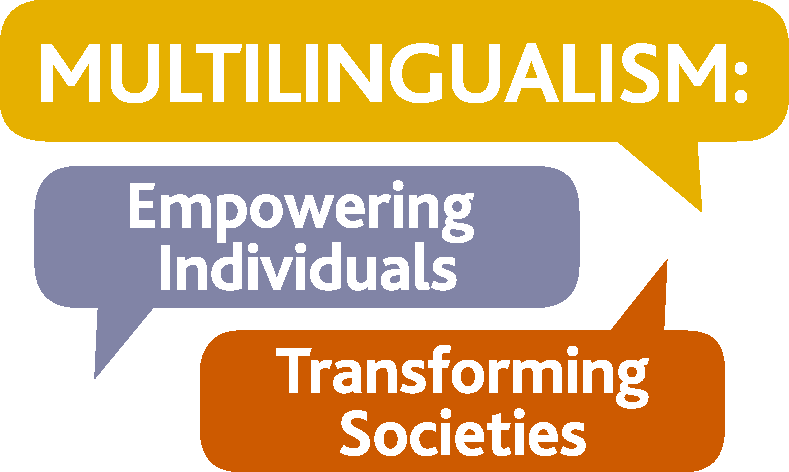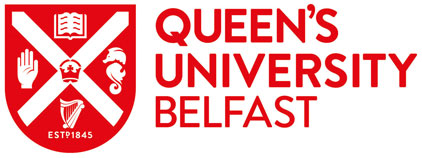Children with English as an Additional Language - towards evidence based policy
Too often headlines assert that children with English as an Additional Language (EAL) are a problem or a drain on resources or, by contrast, that they are outperforming children for whom English is a first language. Crude headlines like this miss the point, the picture is mixed, complex and nuanced, as research from Cambridge University and others shows (Arnot et al. 2014). The role of research and evidence in driving education policy and practice is slowly gaining traction. As the Schools Minister, Nick Gibb has said:
“Ensuring teachers of the future are equipped with an up-to-date understanding of the latest research and a desire to use evidence to inform their teaching practice is key to improving schools.” (Gibb 2017)
The Government’s “What Works” Centre in Education, the Educational Endowment Foundation is testing a number of educational interventions through a series of randomized controlled trials (RCTs). This includes three trials testing methodologies for improving the outcomes of children with EAL. These trials will report in the next two years. RCTs in the field of primary and secondary education are relatively new, however they are valuable as it is important to find out what doesn’t work as well as what does work, so that scarce resources are effectively deployed.
English as an Additional Language – moving away from a deficit model
Central to the MEITS research project and the Languages, Society & Policy journal is the concept that multilingualism is an asset and not a deficit. Children in the UK school system whose first language is not English, however, are too often seen as a problem for teachers and for the school system and not as an asset.
Current policy changes, particularly the loss of ring-fenced funding for EAL support in 2011, have meant that local authorities have lost their specialist expertise in supporting children with EAL. When this is combined with a proliferation of the ways in which schools approach continuous professional development, it is unsurprising that a recent research report from Cambridge University “revealed as much about what the school system does not know as what schools do know and provide for.” (Arnot et al. 2014: 5)
There is of course still some strong practice, but nationally the picture is patchy, and so it is perhaps inevitable that there a policy vacuum nationally and an over reliance on untested assumptions and methods, or that there is a perception that a school is not equipped with the expertise needed to enable a multilingual child to thrive and achieve.
What does the research evidence show?
In this context it is crucial to look at what the research evidence does show. The term “English as an Additional Language” is defined as a language other than English being spoken at home. This means an EAL child can be a child of an international diplomat, a refugee or a child of a migrant worker. The following hypothetical examples paint a picture of just how different the situations of, and outcomes for, children learning EAL can be.
Marie-Ange is the daughter of a French banker. She attends an outstanding school in London, has been well educated in France and has a high degree of fluency in English.
Lukas is the son of Lithuanian parents. His prior education in Lithuania has covered some of the material needed for GCSEs but he has limited English academic vocabulary needed for the exams.
Sahra is a Somali refugee who has fled war and persecution and is recovering from trauma. She has had limited education and has limited literacy in her mother tongue. She has had no exposure to English.
Importantly, the “EAL” measure that schools use is not a measure of English language proficiency. As research published by Oxford University which analyses data from the National Pupil Database (NPD) states:
‘The NPD EAL data clearly needs to be interpreted with some caution. It is explicitly not a measure of the pupil’s fluency in English: pupils recorded as EAL may speak no English at all or they may be fully fluent in English. Indeed there is huge heterogeneity within the group coded as EAL. On the one hand, this might include second or third generation ethnic minority students who may be exposed to a language other than English as part of their cultural heritage but use it rarely if at all, using English as their everyday language and being quite fluent in it. At the other extreme it might include new migrants arriving in England who speak no English at all, and may have varying levels of literacy in their previous country of origin’ (Strand et al. 2015).
Professor Strand’s report identifies that at the end of reception (age 5) only 44% of EAL pupils are recorded as having achieved a good level of development compared to 54% of non-EAL pupils. However, by age 16, this gap has narrowed significantly with 58.3% of EAL pupils achieving five A*-C GCSEs compared to 60.9% of non-EAL pupils. However, again caution is needed here. These average attainment figures mask a huge range of outcomes for different EAL pupils. The research found that many of the factors associated with risk of low achievement are the same for EAL pupils as their non-EAL peers, such as Special Educational Needs (SEN); being entitled to a Free School Meal (FSM); deprivation; attending school outside London; and being summer born.
In addition, EAL pupils are significantly more likely to underachieve compared to their non-EAL peers if the following factors apply to them:
Entry to England from abroad during a Key Stage at school: On average, such EAL pupils were 12 months behind their non-EAL peers.
Changing school during a Key Stage at school: On average, EAL pupils who joined their primary school in Years 5/6 had significantly lower achievement than those who joined in Years 3/4.
Being from particular ethnic groups: EAL pupils in the ethnic groups of White Other, Black African and Pakistani have markedly lower outcomes than their non-EAL peers. Speakers of Somali, Lingala and Lithuanian have especially low outcomes at aged 16 (See Strand et al. 2015).
For EAL pupils, it is also important to scrutinize the data in relation to subject-based achievement as it offers additional insights. EAL pupils’ achievement for Maths and Modern Foreign Languages is similar to or superior to pupils for whom English is a first language.
“EAL students' scores in maths assessments are always higher than in reading assessments at every age; for maths the EAL gap is almost eliminated by age 11 (O[dds] R[atio]=0.90) and by age 16 EAL students are slightly more likely than FLE (First Language English) students to achieve an A*-C pass in mathematics (OR=1.03). EAL students are also more likely than FLE students to achieve the EBacc (OR=1.11), and to achieve a GCSE A*-C in a Modern Foreign Language (OR=1.90).” (Strand et al. 2015: 6)
However, a closer examination of Ebacc data by individual subject presents a very different picture. It shows that pupils with EAL have much higher rates of entry and achievement on the language component of the EBacc, compared to pupils whose first language is English. EAL children have a slightly lower entry rates to the science and humanities pillars. Higher entry and achievement rates in the language pillar for pupils with English as an Additional Language contributes to their higher overall rates of EBacc entry and achievement. What this analysis shows is that for subjects outside MFL and Maths, not only are the achievement rates lower, but the entry rates for the subjects are also lower. It would be informative to examine this data longitudinally as it appears to indicate that some EAL pupils, particularly those who arrive later in secondary school, are firstly not being entered at all for certain EBacc subjects and secondly that EAL attainment is only higher in certain subjects.
Concluding comments
All of this leads to two principal conclusions. Firstly, the ongoing importance of the role of educational research in shaping policy. This underlines the value of projects such as the MEITS project, where academic institutions are working in partnership with others to make research findings accessible, relevant and timely for policy makers.
A recent example of research influencing policy is the work undertaken following Professor Strand’s research (Strand et al. 2015). This has led to the introduction by the Department for Education of a five-stage proficiency in English language scale, where schools must now assess EAL pupils on a five-stage scale from new to English to Proficient. A collaborative project between The Bell Foundation, Kings College London and Cambridge University has developed a robust research-informed assessment tool to help teachers formatively assess EAL learner’s abilities. These developments are new but provide an important first step in getting a better understanding of multilingual learners’ abilities and competencies.
Secondly, and central to the MEITS project, is regarding multilingualism as an asset, not a deficit. This is particularly important when we consider the future language needs for a global workforce and as Professor Joe Lo Bianco states:
“There are two disadvantages in global language arrangements: one is not knowing English; and the other is knowing only English.” (British Academy 2014)
GCSEs and A levels in a range of community languages will continue following a government commitment in 2015 to protect a number of language GCSEs and A levels after the exam boards announced that from 2017 they would be withdrawing several courses, but it is unclear what the longer-term future holds for these exams. For multilingual students it is important to develop an approach that regards them as individuals and that the languages they can offer are an asset. Similarly, it is important that there is an approach to formative assessment which recognizes their abilities and competencies.
In conclusion, research must be front of mind for policy makers and policy makers also need to be front of mind for researchers. This is not of course without its challenges as highlighted by the Institute for Government’s excellent report which identified that “Research is not timely enough in providing answers to relevant policy questions; and some academics find it difficult to engage effectively with the policy process despite their expertise and potential contribution” And “The fact that many political decisions were driven by values rather than outcomes – and that sometimes the ‘evidence-driven’ answer brought significant political risk” (Rutter 2012: 10).
The present policy framework is, inevitably perhaps in a post-Brexit context, too headline driven. But taking a longer-term evidence-based view and using the available and growing research will enable both policy and practice to better meet individuals’, schools and the country’s interests.
Resources
EAL assessment framework: https://www.bell-foundation.org.uk/eal-programme/teaching-resources/eal-assessment-framework/
References
Arnot, Madeleine, Claudia Schneider, Michael Evans, Yongcan Liu, Oakleigh Welply and Deb Davies-Tutt. 2014. School approaches to the education of EAL students: Language development, social integration and achievement. (Cambridge: The Bell Foundation)
British Academy. 2014. Born Global: Summary of interim findings. <https://www.britac.ac.uk/sites/default/files/Born%20Global_Summary%20of%20Interim%20Findings%2017%20Oct%202014.pdf>
Department for Education. 2016. Revised GCSE and equivalent results in England, 2014 to 2015. <https://www.gov.uk/government/uploads/system/uploads/attachment_data/file/494073/SFR01_2016.pdf>
Gibb, Nick. 2017. ‘The importance of an evidence-informed profession’, speech delivered at Buckingham University 16th February 2017. <https://www.gov.uk/government/speeches/nick-gibb-the-importance-of-an-evidence-informed-profession>
Rutter, Jill. 2012. Evidence and evaluation in policy making: A problem of supply or demand? (London: Institute for Government)
Strand, Steve, Lars Malmberg and James Hall. 2015. English as an Additional Language (EAL) and educational achievement in England: An analysis of the National Pupil Database. (Oxford: Department of Education, University of Oxford)
Please cite: Sutton, D. (2017). Multilingual Britain – Towards a coherent policy framework for children with EAL. Languages, Society and Policy https://doi.org/10.17863/CAM.16841






